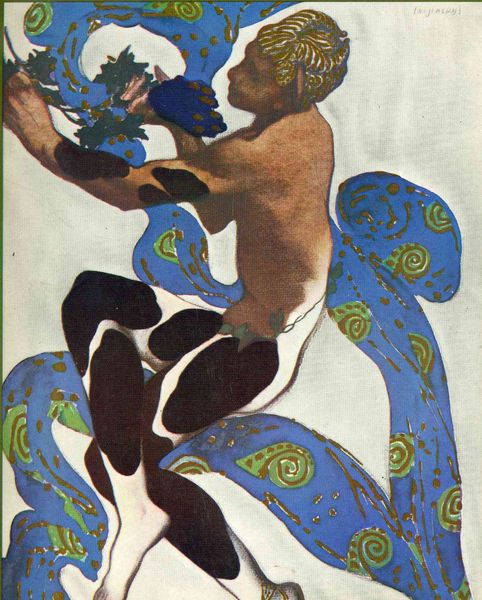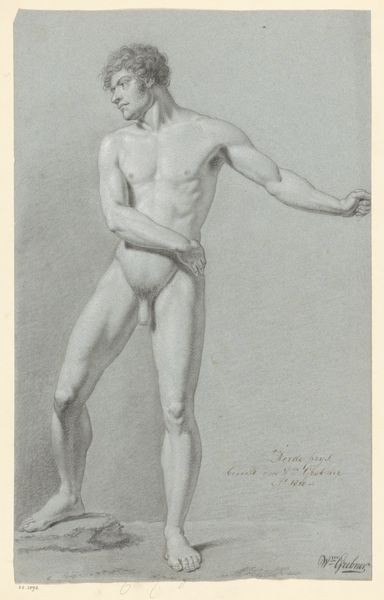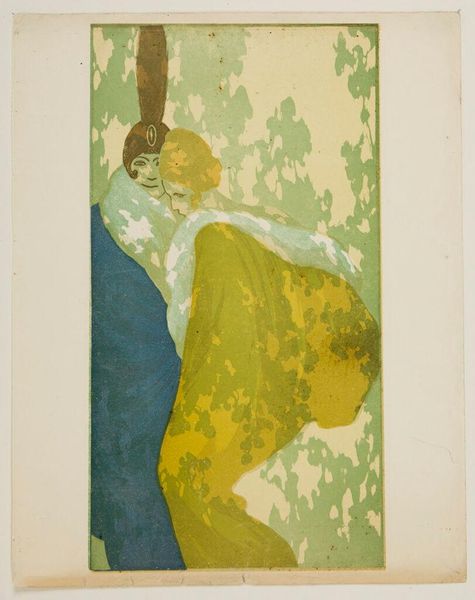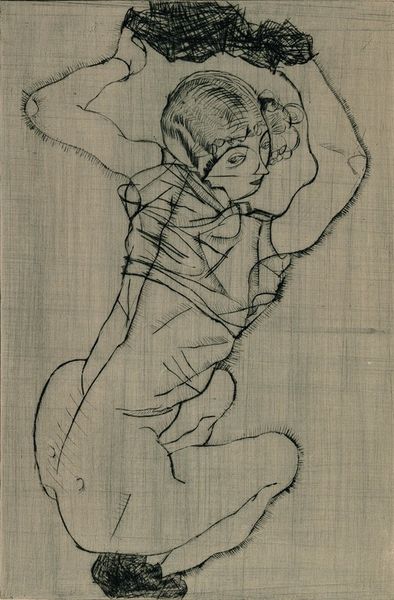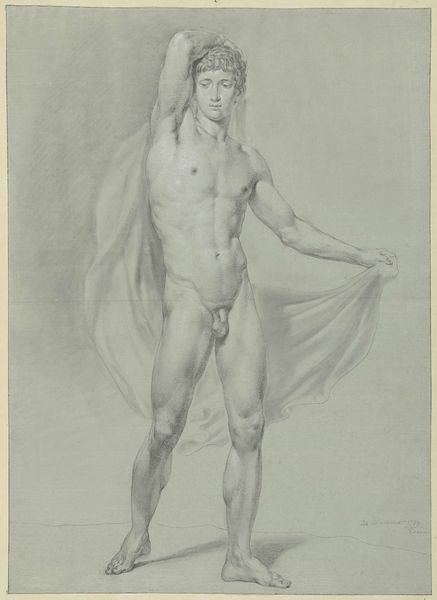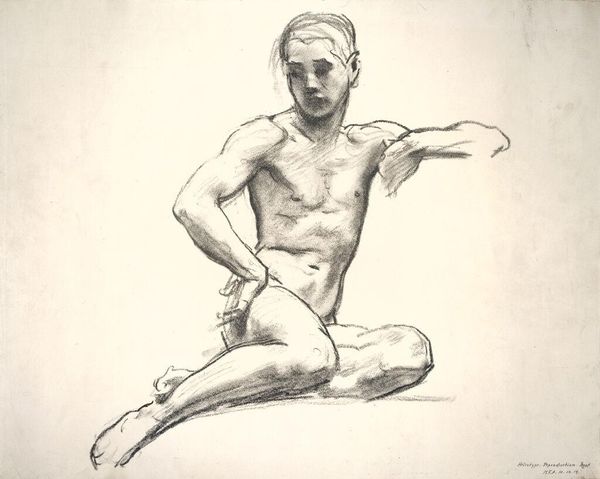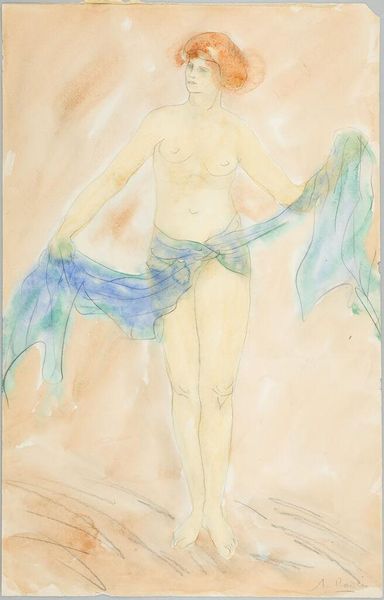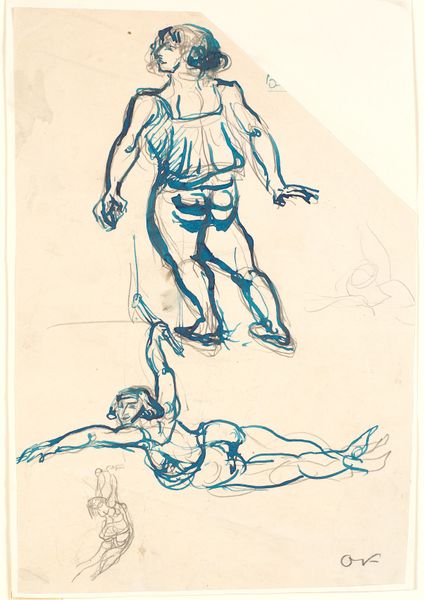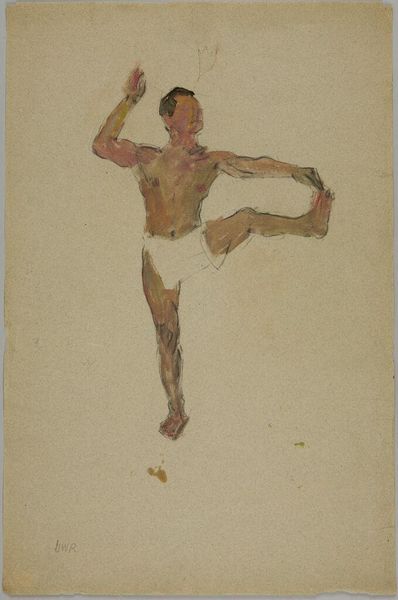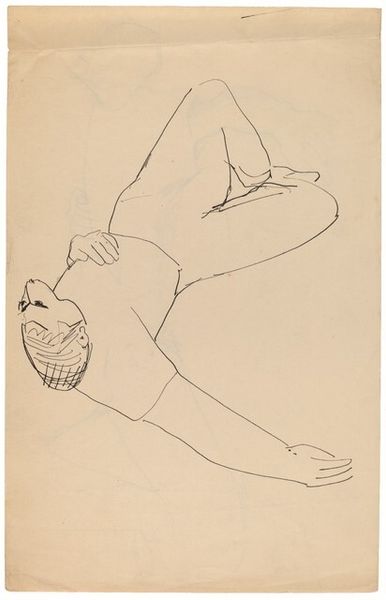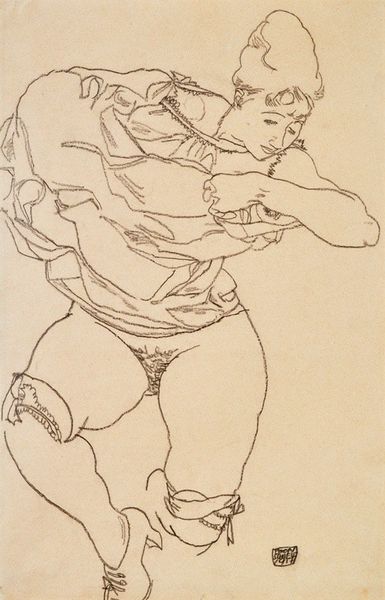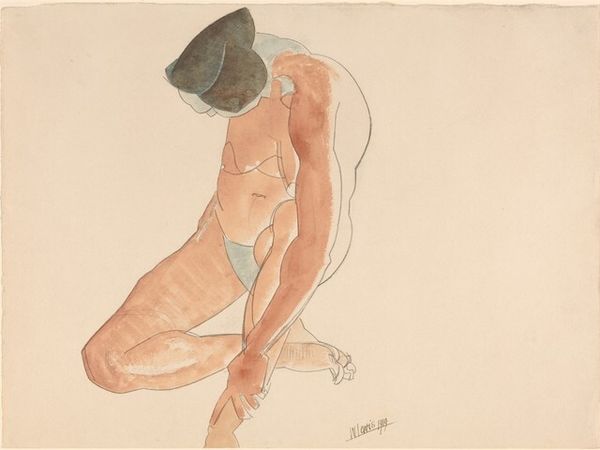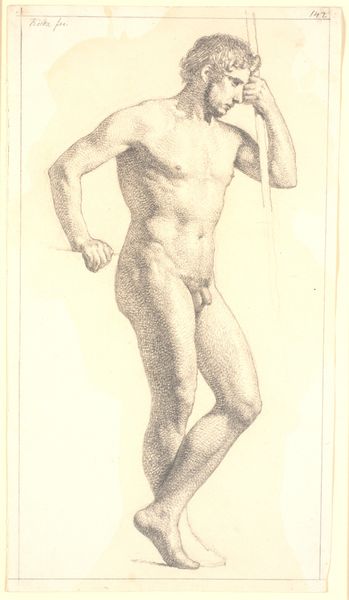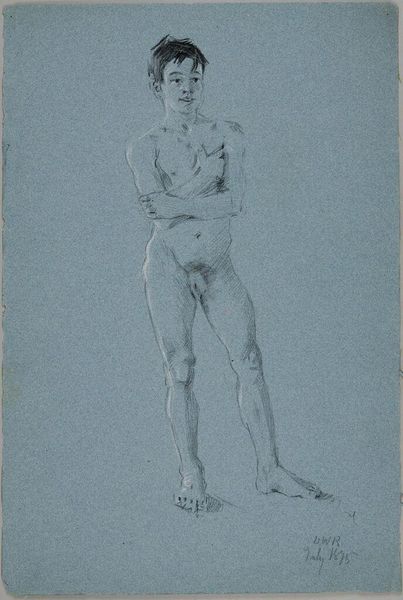
Sketch of the Mosaic Panel 'Scheme of World Structure' for the Exterior Design of the Ternopil Cotton Mill 1974
0:00
0:00
painting, acrylic-paint
#
portrait
#
narrative-art
#
painting
#
caricature
#
soviet-nonconformist-art
#
acrylic-paint
#
figuration
#
portrait art
Copyright: Valerii Lamakh,Fair Use
Editor: Here we have Valerii Lamakh's "Sketch of the Mosaic Panel 'Scheme of World Structure' for the Exterior Design of the Ternopil Cotton Mill," created in 1974 using acrylic paint. What a fascinating image! The figure has a certain awkwardness, especially with those strange shoes on the waves. How would you interpret this work? Curator: This image vibrates with echoes of classical idealism, wouldn't you say? Note the stylized male figure—he recalls Greek statues, a kind of Apollonian striving, yet something feels intentionally…off. Consider those shoes and waves; they become visual anchors, grounding the figure, tethering the ideal to something material, perhaps even industrial. What's he holding in his hand, do you think? Editor: It looks like a simple rod or tool of some kind. Maybe related to textile production at the cotton mill? It's an interesting juxtaposition with the idealized figure. Curator: Precisely! It’s about position, it is the convergence of utopian vision with the realities of Soviet industry, a commentary on progress itself. Notice also the figure’s expression – blank, almost mannequin-like, voided, as if humanity is but a hollow vessel being filled. Doesn’t it remind you of pre-modern ideas of man creating and controlling the waters through this tool, just like we see figures holding scales in other artwork? What kind of world is he building, and for whom? Editor: That connection between utopia and industrial reality gives it a completely different feel. Thanks for pointing out how those symbols carry such weight. I initially only considered compositionally, but I think there is so much more to look for. Curator: Every element in an image is deliberate, carrying layered cultural significance; there's often far more going on below the surface than initially meets the eye. Keep digging; art speaks in symbols.
Comments
No comments
Be the first to comment and join the conversation on the ultimate creative platform.
